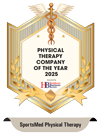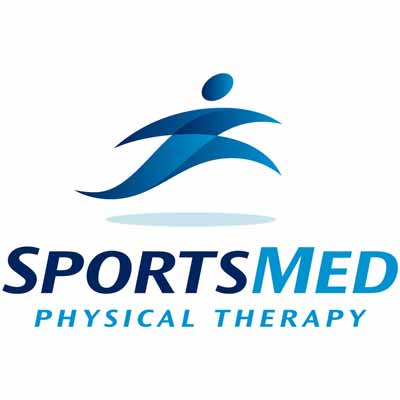Whether recovering from an injury, managing a chronic condition, or simply experiencing the effects of aging, gait training can be the key to regaining confidence and improving your mobility.
This guide will show you everything you need to know about gait training, from its benefits to what to expect during the program.
What Is Gait Training?
“Gait training is a type of treatment therapy focused on improving joint mobility, balance and proprioception, and strength within the core and lower extremities to improve a patient’s walking mechanics and safety within household and community ambulation”, says Stephanie Whittaker, PT, DPT (Doctor of Physical Therapy and the Clinical Director of SportsMed Physical Therapy in Glen Rock, NJ).
Gait training is a physical therapy treatment protocol designed to help people walk better. It focuses on strengthening muscles, improving balance, and increasing joint flexibility to make walking safer and more efficient.
Why Is Gait Training Important?
- Smoother, more efficient walking: Gait training helps refine your walking pattern, increasing efficiency and reducing the energy you spend. This means you can walk further and for longer periods without feeling drained.
- Reduced fall risk: Gait training significantly lowers the risk of falls by improving balance and stability. This means greater confidence when moving around, allowing you to be independent and go through your daily life easily.
- Pain management: In some cases, gait abnormalities can cause pain. Gait training can address these imbalances, reducing pain and discomfort while walking.
- Improved quality of life: Gait training empowers you to participate in activities you enjoy and navigate your surroundings confidently. This, in turn, significantly improves your overall quality of life.
- Confidence boost: Improving your balance and gait will make you feel more confident while walking, reduce anxiety, and reduce your risk of falling. Dr. Stephanie says that the fear of falling is a leading cause of actually falling.
Who Needs Gait Training?
Gait training is a great way to improve mobility for anyone facing challenges with walking. Here are some common scenarios where gait training can help:
Post-Surgical or Injury Rehabilitation
After surgery or sustaining an injury to your legs, hips, or back, you may require gait training to be able to walk safely and efficiently.
Gait training could be particularly helpful after procedures like broken bone repair, ligament tear repair, or joint replacements. A physical therapist can design a program to help you rebuild strength, restore proper gait mechanics, and boost your confidence when you walk.
Neurological Conditions
Many neurological conditions can disrupt your gait pattern, affecting your balance, coordination, and strength. Gait training can address these challenges by incorporating specific exercises.
These exercises involve targeted movements to improve balance and coordination and strengthening exercises to improve walking endurance and control.
Age-related Mobility Decline
As you age, it’s natural to experience some weakening in muscles and bones and a decline in balance. This can significantly increase the risk of falls.
Gait training specifically designed for older adults can incorporate exercises to improve strength, balance, and flexibility. This helps with walking, reduces the likelihood of falls, and promotes independent living.
Vestibular Dysfunction
The vestibular system in the inner ear plays a crucial role in maintaining balance. If this system malfunctions, walking can become a challenge.
Dr. Stephanie recommends that gait training can be valuable for patients experiencing vestibular complications, helping them improve balance and coordination through targeted exercises.
What To Expect During Gait Training
Gait training isn’t just about correcting your walking pattern; it’s a personalized journey toward improved mobility, stability, and reduced fall risk. When you decide to get this physical therapy to improve your mobility, here’s what you can expect:
The Gait Assessment
At this initial phase, the physical therapist will carefully assess your walking pattern to identify areas for improvement. According to Dr. Stephanie, they may do the following:
- Fall risk evaluations: Tests like the Timed Up and Go (TUG) will analyze your balance, strength, and reaction time to pinpoint potential fall risks.
- Joint mobility checks: The therapist will gently move your joints through their range of motion to see if limitations in your ankles, hips, or knees are hindering your gait.
- Muscle strength analysis: Exercises or manual tests will pinpoint weaknesses in crucial leg muscles like quads, hamstrings, and calves. Weaknesses in these areas can significantly affect your walking ability.
- Assistive device assessment: The therapist will determine if you need a cane, walker, or gait belt to ensure safe walking during training. This device can become a valuable tool for improved mobility and confidence.
Strengthening Exercises
Once the therapist understands your specific needs, the next step is to strengthen your walking foundation. Exercises will become part of your routine; common exercises to expect include:
- squats
- lunges
- heel raises
- calf raises
These exercises target key muscle groups, improving leg strength, stability, and power, all essential for confident walking. As you progress, the exercises will gradually increase in difficulty, keeping you challenged and motivated.
Tight muscles can prevent proper gait. The therapist will prescribe exercises targeting the ankles, hips, and knees.
Gait Retraining
The therapist will use various techniques to help you achieve proper walking mechanics. Visual cues like lines on the floor guide foot placement, while gentle touches and clear instructions help you understand and execute proper walking movements. This multi-sensory approach reinforces the correct walking pattern, leading to smoother and safer strides.
Assistive Devices
If you need an extra hand (or cane!), the therapist will introduce you to the right assistive device and train you on its proper use.
This could involve learning proper cane techniques for balance and stability or mastering how to use a walker for support while walking.
Home Exercise Program
Therapists understand that progress happens outside the clinic, too. So, they’ll create a personalized home exercise program consisting of exercises you learned in therapy. This allows you to continue practicing and improving your gait between clinic visits.
Gait Training Techniques
Here are some techniques your physical therapist might use during your training sessions:
Overground Gait Training on Various Surfaces
This technique involves practicing walking on different terrains, such as flat surfaces, carpets, uneven ground, or even grass.
This challenges your balance system and strengthens your muscles as they adapt to different walking demands. It also helps you develop the confidence to navigate real-world walking scenarios.
Body Weight-Supported Treadmill Training for Fall Prevention
This technique involves using a specialized treadmill with a harness system that supports some of your body weight.
It allows you to practice walking with a reduced risk of falling, which can be great if you’re recovering from injuries or experiencing balance issues.
Obstacle Course Training to Improve Agility and Coordination
The obstacle course training technique helps challenge your agility, coordination, and reaction time by navigating an obstacle course with cones, ramps, or hurdles.
This translates to improved control over your movements and the ability to adapt your walking pattern to navigate obstacles you’ll encounter in everyday life.
Mirror Training for Self-Observation and Gait Correction
Mirror training involves using a mirror to observe your walking pattern in real-time. This way, you can identify areas for improvement and consciously focus on correcting them.
What Are the Effects of Gait Training Methods?
Gait training techniques target various aspects of walking, leading to a range of positive results such as:
- Speed changes: Exercises that involve changing your walking speed at intervals improve your ability to adapt your gait to different situations, like navigating crowded sidewalks or crossing streets safely.
- Direction changes: Techniques like obstacle courses or turning exercises enhance your agility and coordination, allowing you to make smooth turns and navigate unexpected changes in direction easily.
- Shifting center of mass: Exercises that challenge your balance, like single-leg stands or walking on uneven surfaces, improve your ability to control your center of mass over your center of gravity. This translates to better balance and a reduced risk of falls.
- Rotational exercises incorporate trunk rotations or stepping exercises in different directions. They improve core strength and stability, which are crucial in maintaining proper posture and balance while walking.
How to Get the Best Out of Gait Training
Here are some excellent pointers to maximize the benefits of gait training:
- Consistency is key: Practicing the prescribed exercises and techniques is important for sustained improvement. Consistency helps solidify your new walking patterns and strengthens your muscles for a proper gait.
- Form matters: Maintaining proper form and technique during exercises is crucial to avoid injuries and ensure you’re targeting the intended muscle groups. Don’t hesitate to ask your therapist for clarification or modifications if you need to.
- Progress gradually: As you improve, your therapist will gradually increase the difficulty and complexity of the exercises. This keeps you challenged and motivated while preventing plateaus in your progress.
- Be patient: Gait training takes time and dedication. Celebrate small milestones along the way, and acknowledge your progress. This will keep you motivated and focused on achieving your long-term goals.
- Communication is Key: Open communication with your therapist is crucial. Discuss any difficulties you encounter during training or ask questions about specific exercises. Your therapist can adjust the program and guide to ensure optimal results.
FAQs on Gait Training
Here are some frequently asked questions on gait training:
Can I Do Gait Training Exercises At Home?
You can perform some gait training exercises at home, with safety being the top priority. Have someone present to assist you if you need help with balance or stability.
“If you must perform gait training at home, safety must always be a priority”, advises Dr. Stephanie. “You can ensure safety by performing your training exercises with supervision, with counter support, or in the corner of a room for support if you’re at risk of falling backward”.
How Long Does Gait Training Typically Last?
Gait training can be lifelong, especially for people with chronic conditions that affect mobility. However, the duration and intensity of the training program will vary depending on your specific needs and goals.
Start a Personalized Gait Training Program With SportsMed Physical Therapy
Gait training can be the key to improving self-independence and reducing reliance on loved ones and caretakers.
According to Dr. Stephanie, the more confident we can get our older patient population in performing their activities of daily living such as transfers, stair negotiation, and change of direction in tight spaces like the bathroom, the more successful we can be in preventing further complications and falls.
Gait training is for all ages, from post-op athletes to geriatric individuals, to help them return to maximum quality of life.
For a personalized gait training program, get expert guidance from our physical therapists at SportsMed Physical Therapy.
Contact us today and schedule a consultation to get started.





